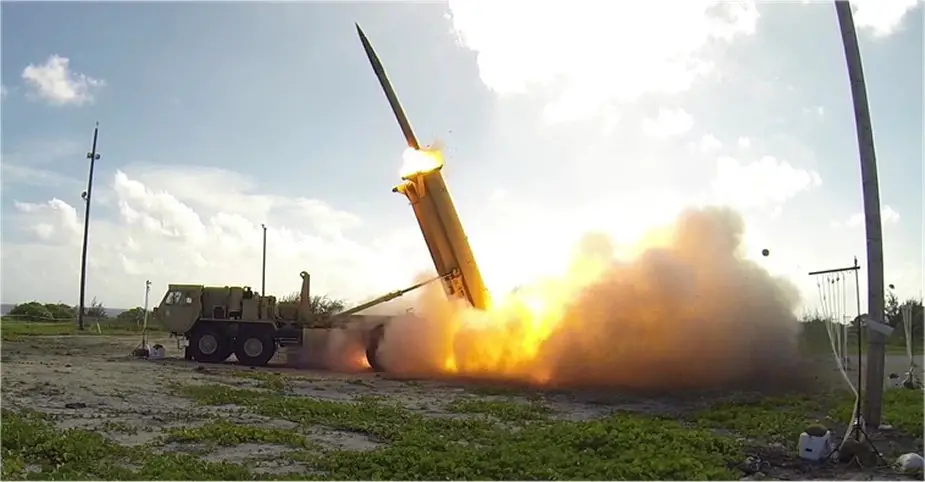Breaking news
US THAAD Missile System training exercise in Marianas Islands amid geopolitical tensions.
According to an article from Marianas Variety published on July 12, 2023, the 94th Army Air and Missile Defense Command of the United States, in conjunction with Joint Region Marianas, conducted a training exercise involving the Terminal High-Altitude Area Defense (THAAD) system. This training exercise takes place on the islands of Tinian and Rota from July 13 to 18, 2023.
Follow Army Recognition on Google News at this link

A Terminal High Altitude Area Defense (THAAD) interceptor is launched from a THAAD battery during a test in 2015 (Picture source US DoD)
As part of this exercise, a package consisting of a THAAD launcher, a Patriot launcher, and related personnel and equipment will be deployed to Tinian and Rota. The THAAD system will be stationed at the military-leased area in the Commonwealth of the Northern Mariana Islands (CNMI), serving as the deployment site, with Rota also being utilized. Importantly, the deployed equipment will not be armed with ammunition.
The primary objective of this operation is to acquire valuable data and insights that will influence future deployments of remote launch packages within the region. The recently developed THAAD/Patriot Remote Launch capability allows launchers to operate independently from their Tactical Fire Control Center and radar array, thereby expanding the defense area of the 94th AAMDC and offering commanders greater flexibility in deployment.
The transportation of equipment will be facilitated by C-17 Globemaster III aircraft from the 15th Wing stationed at Joint Base Pearl Harbor-Hickam, Hawai'i. These aircraft will transport the necessary resources from Andersen Air Force Base in Guam to Rota and Tinian.
It is crucial to clarify that this exercise does not involve a permanent relocation of equipment. The presence of equipment on Tinian and Rota is temporary, and no munitions will be carried onboard.
The Commonwealth Bureau of Military Affairs Office emphasizes that this training exercise is part of ongoing endeavors to enhance regional defense readiness and foster collaboration among military forces in the Indo-Pacific region, which has emerged as a significant area of engagement due to the evolving dynamics of major power competition.
The growing capabilities and influence of China in the region raise important considerations for U.S. strategy, while the strength and durability of the U.S.-India Partnership remain uncertain. Ongoing power transitions in Asia and advancements in military technology have the potential to impact the balance between offensive and defensive capabilities in the region. Therefore, there is a need to explore effective responses to these developments in collaboration with allies and partners in the Indo-Pacific.
Terminal High Altitude Area Defense (THAAD) is a US anti-ballistic missile defense system designed to intercept and destroy short, medium, and intermediate-range ballistic missiles during their terminal phase, which occurs during descent or reentry. This is accomplished through a hit-to-kill approach.
THAAD was developed by the U.S. Army, while its production is handled by the aerospace company Lockheed Martin. The primary components of the THAAD system consist of a large X-band radar and interceptors.
The radar possesses the capability to detect ballistic missiles and track them over a significant distance, enabling effective targeting of incoming threats. The interceptors, essentially missiles themselves, are launched from the ground to destroy incoming missiles in flight, thereby neutralizing the threat.
The THAAD system is designed to intercept targets within a range of up to 200 kilometers (approximately 125 miles) and can reach altitudes of up to 150 kilometers (around 93 miles) to eliminate incoming missiles.
The AN/TPY-2 radar, which forms part of the THAAD system, can detect ballistic missiles at a range of up to 1,000 kilometers (approximately 620 miles), depending on the size, speed, and other factors associated with the incoming missile.



















